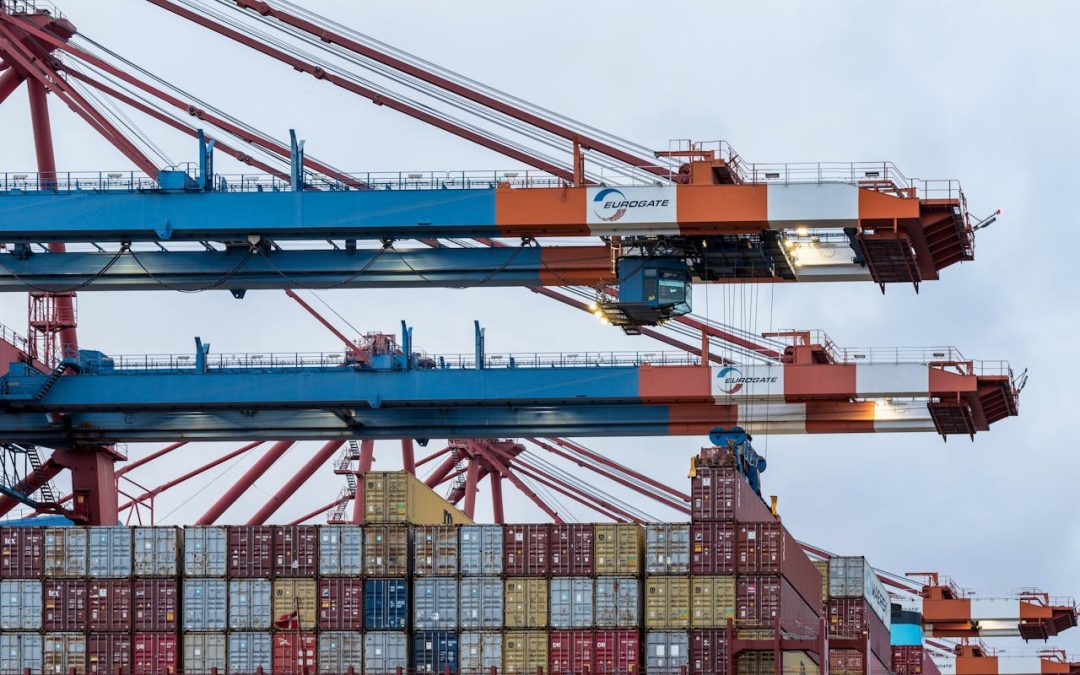Letters of credit are a function of international trade finance designed to smooth the sale of goods between suppliers and customers in different countries. They are an essential part of the global market and form a vital component for trusted international shipping – but what is a letter of credit and how does it work? At Millennium Cargo, we have the answer.
The ‘You Go First’ Problem For International Trade
One of the biggest concerns for international business is the worry that a shipment will be sent out and never paid for. The problem exists on both sides of the equation – for the buyer, the idea of paying for goods from a completely different country where laws are different and chasing any problems will be almost impossible and definitely expensive, while for the seller, the trust needed to send a valuable shipment overseas with absolutely nothing to fall back on if the buyer simply chooses not to pay is understandably nerve-wracking.
Who should go first? Should the supplier send the goods and trust payment will come when they reach their destination? Or should the buyer pay upfront, before the shipment even sees its first truck, relying on the moral standing of the supplier to make sure it gets to them?
It’s clear that someone needs to step in and help.
The Letter of Credit (LC)
A letter of credit (LC) is a guarantee issued by a bank that provides a promise to the seller that the money will be released to them once they provide proof that the goods have been shipped. It also serves as a safety net for the seller, who doesn’t have to part with a penny until the shipment is definitely on its way.
In short, the bank acts as a go-between, taking on the risk themselves and, with their reputation and trusted name, both the seller and the buyer are happy to place trust in them.
Letters of credit reduce the risk for both the supplier and their customer, making international trade more secure and easier for all.

What’s Involved In A Letter Of Credit?
The following terms refer to the different parties involved in the letter of credit:
- Applicant – This is the business importing the goods, which initiates the LC and asks its bank to guarantee payment.
- Beneficiary – This is the seller exporting the goods. They need to follow the terms of the LC and provide the right documentation to be paid.
- The Issuing Bank – This is the applicant’s bank, which will issue the LC and guarantee payment.
- The Advising Bank – Sometimes, the beneficiary’s bank will also become involved in verifying the LC and advising the beneficiary.
Letters of credit may be either finance-based, as a loan provided by the bank to the applicant, or collateral-based, where the applicant deposits the full sum to the bank prior to the LC being issued. As letters of credit are part of the realm of trade finance, issuing banks will undertake their due diligence and check the credit status of the applicant before issue, sometimes even when it is a collateral-based arrangement. This is to protect the issuing bank from risk.
Finance-based letters of credit can form part of a larger funding process as purchase order finance, whereby the loan and LC are provided by the issuing bank leveraged against future business for the applicant, requiring repayment only when that business is completed. This allows an importer to purchase supplies from abroad, process them accordingly, and then sell them on to repay the finance. In this way, importers can make significant international trade deals without the need for immediate business capital.

The Letter of Credit Process – How it Works
The process of obtaining and using a letter of credit is fairly simple and makes the whole export/import process considerably smoother:
1 – Application
The first step is the buyer applying for a letter of credit at their bank. They will specify the terms and conditions of the sale to the bank and either provide the collateral for the LC or make an application for the appropriate credit.
2 – Letter of Credit Issued
If the application is approved, the issuing bank provides the letter of credit to the advising bank, or directly to the beneficiary if there is no advising bank.
3 – Goods and Documents Prepared
The beneficiary (seller) then prepares the goods for shipping, creating all the documents as needed to conform to the terms of the agreement.
4 – Goods Shipped
The seller then ships the goods to complete the terms of the agreement.
5 – Payment Requested
The documents are presented to their bank (if advisory) or the issuing bank directly.
6 – Payment Made
The issuing bank reviews the documents and, if they are all in order, releases the funds to the beneficiary.
7 – Finance Agreements Paid
If the letter of credit is part of a wider finance arrangement, the applicant will pay this off as the terms dictate.
Disputes with a Letter of Credit
It is important to note that the letter of credit system does not make the issuing bank a guarantor of the goods’ arrival; it is merely that the documents regarding their shipping are all in order. Essentially, it makes sure payment is made once the goods leave the supplier, and has no involvement in anything that may happen beyond that point.
If the goods are not received, a dispute must be raised between the buyer and the seller as usual, and claims on insurance may be involved to resolve the problem.
However, in these cases, the seller can be assured that the shipment was made and that the buyer is not holding the goods or trying to defraud the seller in any way.
Different Types of LC
There are a range of types of letters of credit, with specific differences to facilitate the exact needs of the applicant. This includes revolving letters of credit, which form a revolving credit facility enabling ongoing trade between the two parties; transferable letters of credit, which allow the original beneficiary to transfer all or part of the payment to another party; confirmed letters of credit, which provide an extra layer of security through a bank in the seller’s home country; and fully funded documentary letters of credit which provide even greater assurance that the funds are fully in place before the seller ships the goods.
Millennium Cargo can help you with your letters of credit and work with you to make sure you get the right support for your needs.
Letter of Credit Pros and Cons
Letters of credit offer:
- PRO: Assurance of payment for the seller, even if the buyer defaults.
- PRO: Confidence for the seller that the payment won’t be released until the goods are shipped.
- PRO: Improving relationships, allowing trust to build between parties.
- PRO: Opportunity for the seller to access larger funding options.
However, the following should also be considered:
- CON: Bank fees will apply.
- CON: Care and attention to detail are essential for the seller to meet the terms and conditions.
- CON: There are strict deadlines in place for documentation presentation.
Help from Millennium Cargo
Letters of credit are a valuable tool for smoothing international trade and reducing financial risk for all parties. If the idea of a letter of credit sounds like a good idea, but the whole process seems overwhelming, then speak to us. Our specialists at Millennium Cargo are here to guide you through the letters of credit process.

